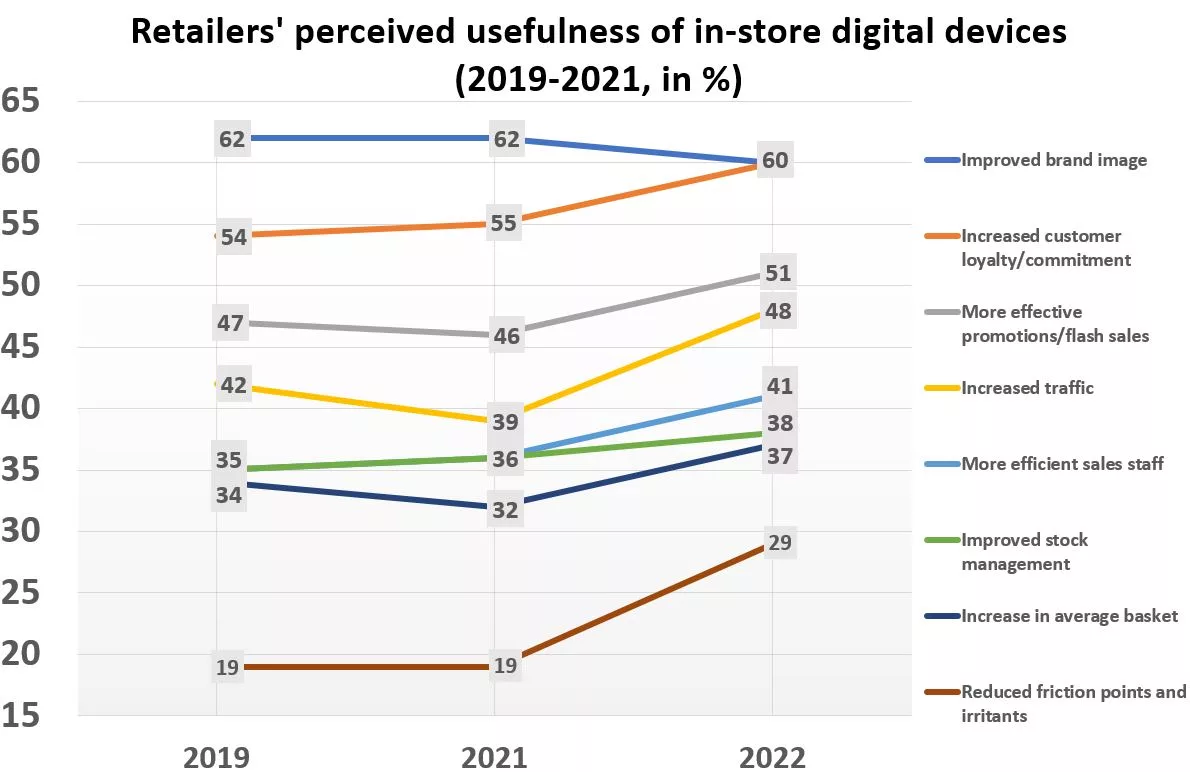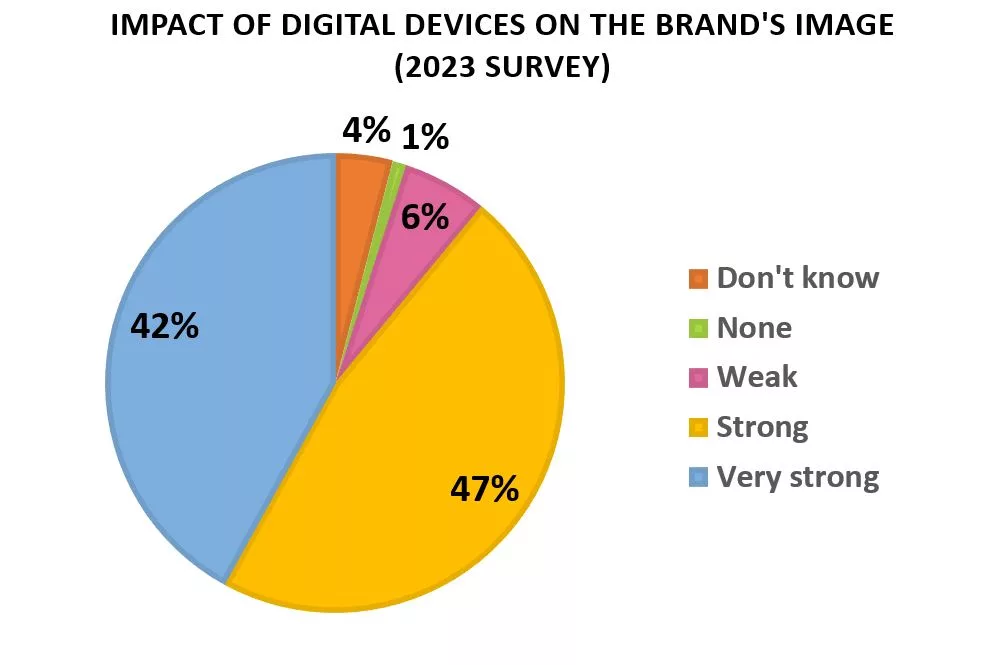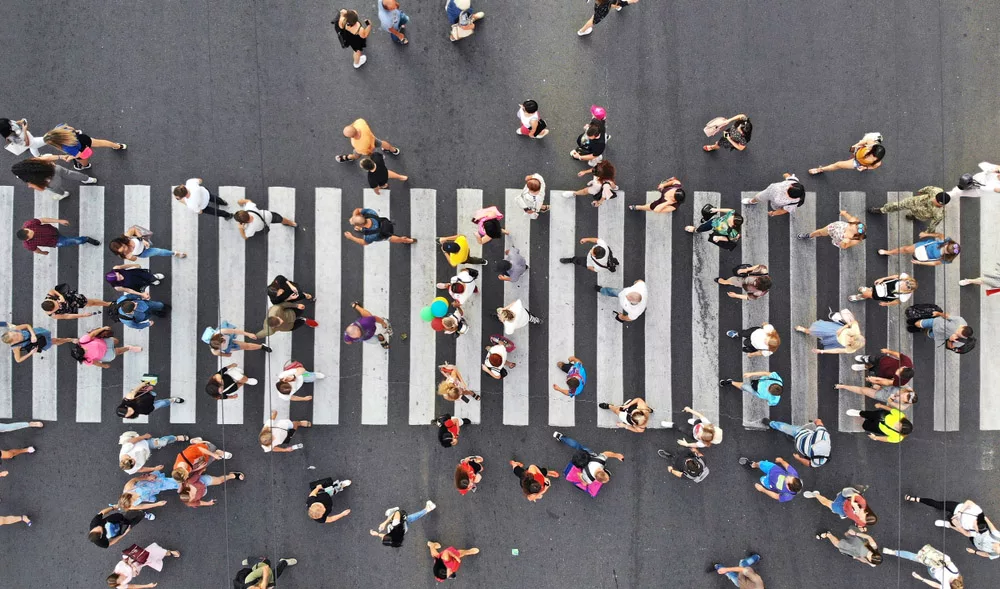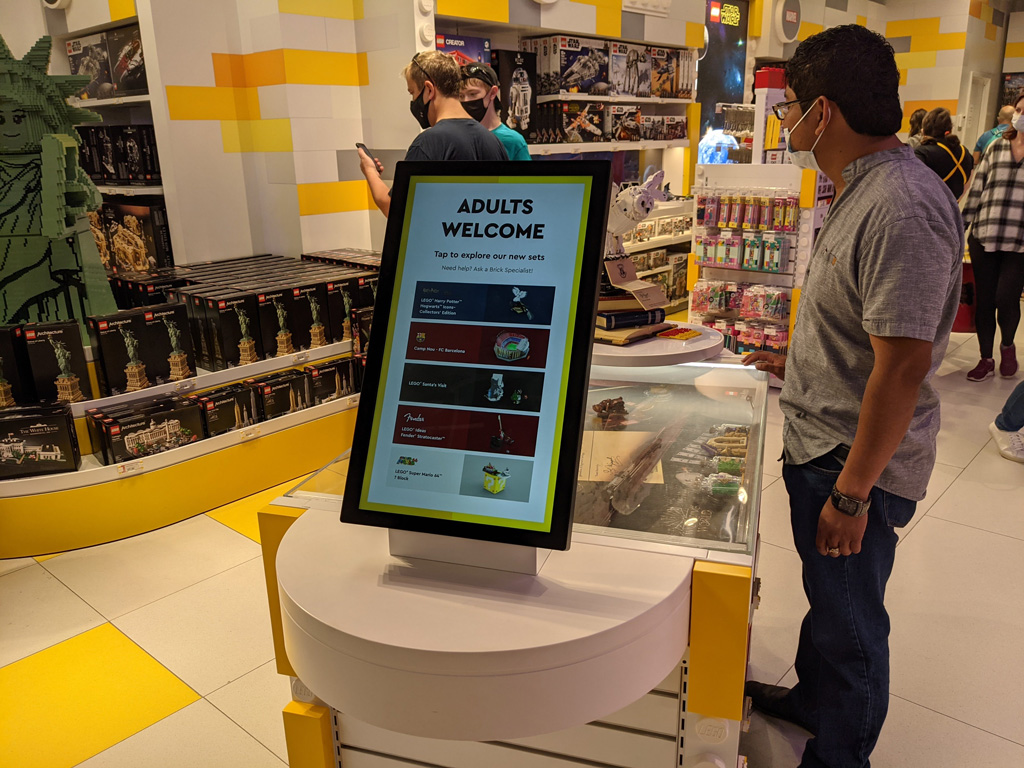Consumers need to be more satisfied with in-store digital devices. Yet this doesn’t stop retailers from being convinced of the benefits. In a survey published in April 2023, retailers gave their views on the perceived benefits of digital in sales outlets. It’s an understatement to say that their opinions contrast sharply with those of consumers.
Contact IntoTheMinds for surveys and marketing research
5 statistics on the perceived benefits of in-store digital for retailers
- 89%of retailers think digital is good for their brand image
- 60%of retailers expect in-store digital to improve customer loyalty
- For 51%of retailers, in-store digital devices enable better promotion of special offers.
- 48%of retailers expect digital devices to increase in-store traffic
- For 41%of retailers, sales staff could see their efficiency increase thanks to digital.
Benefit N°1: loyalty and brand image for 60% of retailers
The results of the survey show that for 60% of retailers, the benefits of in-store digital are felt above all on:
- brand image
- customer loyalty
Since 2019, these two benefits have topped the ranking, and in 2022 they are tied. A critical analysis of these “beliefs” is in order. Let’s start with the brand image, which has been at the top of the podium since the survey was launched.
Store image improved by digital devices?
First, I’d like to challenge the idea that digital devices improve brand image. 89% of retailers claim to perceive a positive impact on brand image. But another survey reveals that consumers expect tangible benefits from digital devices: saving time and money. Not all digital equipment is created equal.
Digital devices are not designed to enhance the store. Its function must be practical if it is to be perceived positively by the customer. From this point of view, the digitalization of the physical sales outlet, since it is a general trend, becomes unavoidable to keep up with other chains. Digitization is, therefore, a way for retailers to maintain their brand image.
Customer loyalty: 2 distinct modes of activation
The other perceived benefit of digitalization is its effect on customer loyalty (and its impact on profitability and growth). Here again, we need to unpack the loyalty mechanism to understand the role of digital in-store. First, let’s remember that customer loyalty is often conceptualized as a consequence of customer satisfaction. Even if the consumer of 2023 is not the same as that of the 1990s, it’s not wrong to say this at first glance.
So, how can the digitalization of a sales outlet influence customer loyalty? In 2 ways:
- by increasing customer satisfaction and encouraging customers to return naturally
- by enabling retailers to be proactive towards customers by exploiting their digital footprints.
In the first case (“coming back naturally”), the digital device must once again deliver real added value, tangible and felt as such by the customer. As we have seen, in 2023, this added value can only be of 2 types: saving time or making savings. If the in-store digital device offers this type of benefit, then the customer will naturally return.
In the second case (proactivity thanks to digital traces), the retailer must converge online and offline customer journeys. This perfect understanding of the digital and physical customer journeys is a grail I spoke of a few years ago. With the proliferation of in-store digital equipment, achieving this goal is even more realistic.
Every in-store digital implementation should be critiqued based on the added value it brings to the customer.
Other benefits of sales outlet digitalization
The survey also reveals the evolution of the perceived benefits of sales outlet digitalization since 2019. Again, let me remind you that these are the retailers’ views.
First of all, in 3rd place now comes the ability to highlight promotions and flash sales. The increase since 2019 is significant (+9 points). It underlines the growing importance of savings in the context of galloping inflation. Digital tools undoubtedly enable greater responsiveness (inventory management, competitive pressure). Dynamic pricing systems have a bright future, offering maximum responsiveness and the promise of greater profitability (see my pricing guide).
In 4th place is increased traffic, a benefit cited by 48% of retailers. Logically, this perceived benefit is 9 points higher than in 2021, a period linked to the COVID restrictions. Again, we must look at the bigger picture and understand that increasing traffic through digitalization is only possible at the retailer’s instigation. Shoppers won’t return of their own accord because of a connected booth or a touch screen. They will only come back if encouraged, which requires the retailer to exploit the data and make proposals to bring the customer back into the store. The hope is that customers will give in to their desires.
In 5th, 6th and 7th place we find, respectively, the efficiency of the sales staff (41%), better stock management (38%) and an increase in the average basket (37%). Only 49% of consumers think a digital device improves sales efficiency.
Last but not least, 8th place deserves a mention. It is occupied by “reducing friction points.” First, this is the most pronounced increase (+10 points between 2021 and 2022). So, what happened? The COVID episode made retailers aware of some of the limits of the 100% offline model. Supply chain breakdowns, inventory management, traffic management, etc., were all factors in customer dissatisfaction. What was an undercurrent has undoubtedly become highly visible during the crisis, explaining this renewed interest. So why does this benefit only come in 8th place? We need to highlight a methodological problem here. Friction point” is a generic term that can cover several realities. Inventory management or efficient salespeople can be friction points. As a perceived benefit, reducing friction points is too general a term, which may have confused respondents.
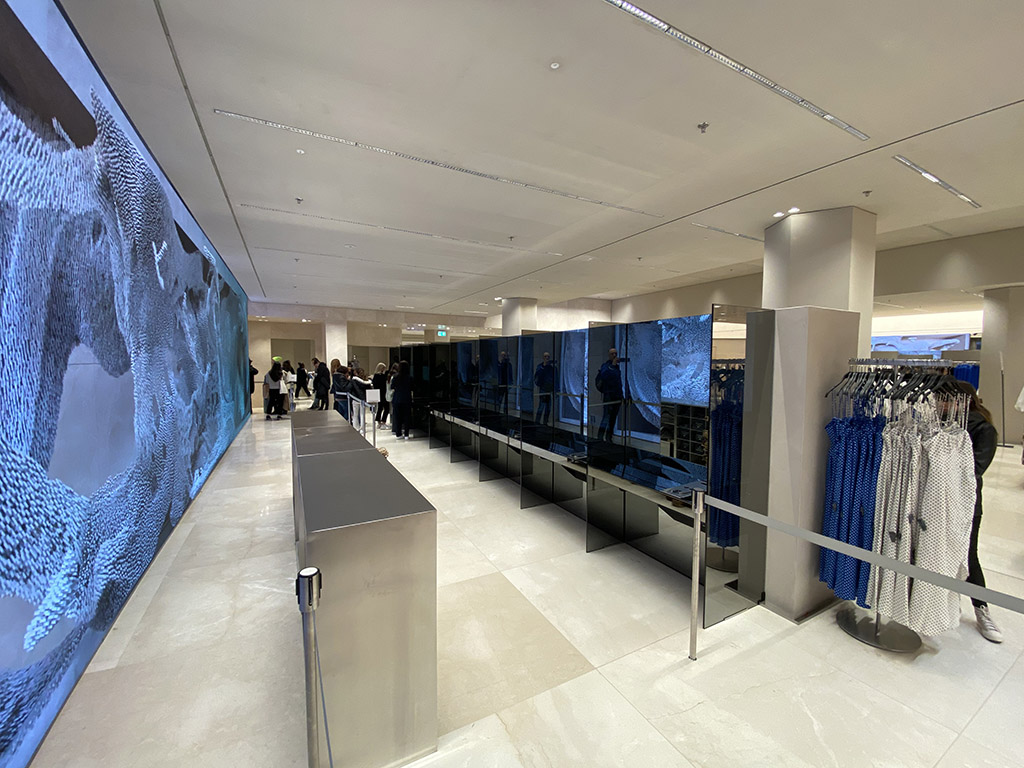
Conclusion
This survey reveals the perceived benefits of digitalization among retail decision-makers. The differences in consumers’ perceptions are quite striking. Consumers are more pragmatic, expecting to save time and money.
Retail decision-makers, therefore, have a more subjective view of the benefits of digitalization, which revolve around more general concepts such as improving brand image and customer loyalty. However, each digital device must respond to a specific customer need to achieve these objectives. So, nothing should be left to chance, and every implementation of an in-store digital device should be critiqued regarding the added value it brings the customer. The digital device should only be implemented if the added value is immediate and obvious.
Posted in Research.
